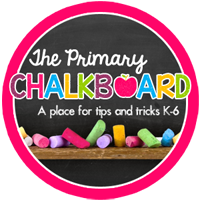Today, I am going to be sharing some general tips about how to hold effective writing conferences. Now, before I begin, there are no hard and fast rules about how to conference. You are not doing it wrong. I don't feel I am either. Everyone has to make it work for themselves, and most importantly, their students. I am just going to share some conferencing practices that have worked for me.
1) CELEBRATE! : I'm going to tell the truth here, and admit that I used to be the kind of writing teacher that would look at a young 2nd grader's writing and focus on all of the grammar, punctuation, and spelling mistakes. Many years, and several professional books later (Thank you Lucy Calkins!), I now place the least amount of emphasis on those things with my young writers. I use our writing time to develop enthusiasm, stamina, fluency, creativity, and voice. This is the time to praise, praise, praise! Getting my students to the point where they look forward to writing workshop has been THE biggest factor in making my students better writers. It all starts with letting them know they are authors, and making them aware of where they are being successful in their craft.
2) SHOULD I STAY OR SHOULD I GO, NOW? : "if I go there will be trouble, and if I stay it will be double..." Anyone else remember that song? Ha, ha.
Every time I see a picture of a teacher conferencing, they are crouched down next to the student's desk. After they finish up, they move on to the next student. I tried this. Honestly, I did. But, I was never able to meet my goal of seeing 5 students per day. Perhaps if I would have carried a timer with me, I could have accomplished my goal. But, that just didn't feel respectful or authentic to me.
I have had much greater success with sending 5 students to go begin their writing at our group table, right after our mini-lesson. Then, for the first 5 minutes of writer's workshop I just wander through and make sure everyone is ok, and on the right track. Sometimes I am just reminding Juan to put on his glasses, or Stevie to use his Spaceman stick for spacing. My students also know that this is a good time to have me write words in their personal dictionaries. They raise their dictionaries in the air, open to the first letter in the word. After about 5 minutes, there is a purposeful, yet quiet hum to the classroom. This is when I head back to my little group. I almost always get through all 5 students in a session. But, if I don't, I call the ones I missed at a later time, or during our next WW session.
Respecting students' writing as theirs, is so important. Now, I do not write on my students' writing. Any helpful comments or suggestions that I share in written form, are done on post-its. The result? My students are more invested, and retain greater ownership over their writing. This has increased their independence as writers, as well as the quality of their writing. They are proud of their writing, and want to create the best piece that they can.
4) STAY FOCUSED : When it comes to writing conferencing, less is absolutely, positively, more. With young writers, there will be a lot to fix. So much that it may make your eyes burn. I start my conferences with asking students to share their writing with me, and offering at least 2-3 compliments on things they have done well. Then, I make one suggestion about how to strengthen their writing piece.
5) DOCUMENT, DOCUMENT, DOCUMENT : Keep a record of your conferences with each student, My individual student form has a place for the date, notes on what the author is doing well, and a space for notes on what I taught them during our conference, or what lesson they might need in the future. I review the notes on all my students before I plan my next week of writing instruction. I focus on shared needs, or small groups of students that might need the same lesson. Sometimes, I will see glaring issues that I will need to address in a whole class mini-lesson. These notes are like gold, and the more you use them to drive your instruction, the more growth you will see in your students.
Don't forget to check out all of July's informative posts:
Thanks for stopping by.

















































